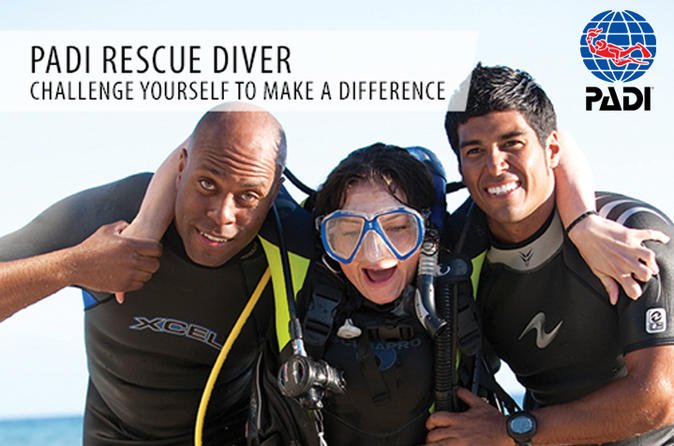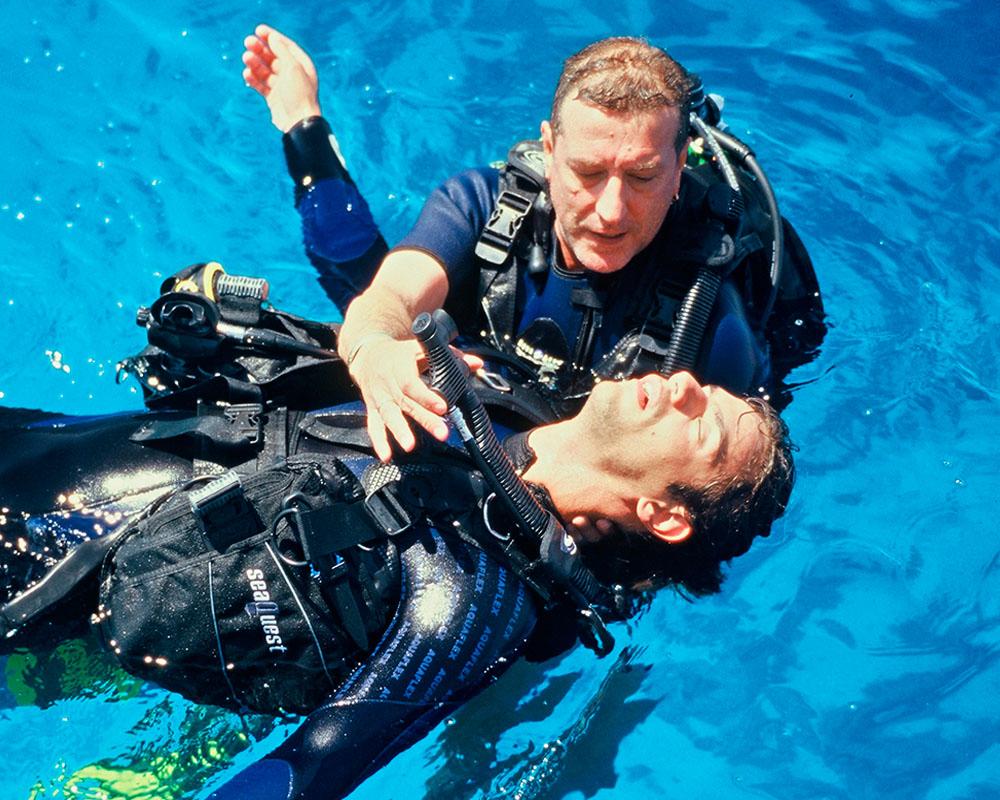


Every diver should aspire to be a PADI Rescue Diver.
During your training, you will learn to recognize and understand the cause of diving accidents in addition to strengthening your own self-rescue skills.
In this physically challenging course, you will learn how to manage diving accidents and work as a team to help those in need.
The PADI Rescue Diver course is a perfect compliment to your training so far making you a more competent and aware diver who thinks like a diver.
What You Can Expect
The Rescue Diver Course at Kirra Dive is conducted over 2 to 3 days. Here is a sample schedule to give you an idea of your time commitment;
Day 1
Theory and Confined Water Training.
Day 2
Rescue Excercise & Scenarios (Open Water)
Day 3
Optional Extra Day for Rescue Scenarios
ACADEMIC
The PADI Rescue Diver course prepares you to deal with dive emergencies, minor and major, using a variety of techniques. Through knowledge development and rescue exercises, you learn what to look for and how to respond. During rescue scenarios, you put into practice your knowledge and skills. Topics include:
Self rescue
Recognizing and managing stress in other divers
Emergency management and equipment
Rescuing panicked divers
Rescuing unresponsive divers
RESCUE EXERCISES TO BE COMPLETED
TIRED DIVER
Assist a tired (rational) responsive diver at the surface
PANICKED DIVER
Rescue a panicked (irrational) dive
RESPONSE FROM SHORE, BOAT OR DOCK
Assist a (responsive diver) in distress
DISTRESSED DIVER UNDERWATER
Correctly identify and respond to a diver simulating overexertion, panicked or out-of-air Emergencies.
MISSING DIVER
Quickly and efficiently search for and locate a missing diver using an underwater search pattern.
SURFACING THE UNRESPONSIVE DIVER
Use controlled positive buoyancy as an aid to ascent.
UNRESPONSIVE DIVER AT THE SURFACE
Make contact with and check for breathing on an (unresponsive diver) at the surface.
EXITING THE UNRESPONSIVE DIVER
Remove a breathing, (unresponsive diver) from the water both with and without assistance.
FIRST AID FOR PRESSURE-RELATED INJURIES AND OXYGEN ADMINISTRATION
Demonstrate steps and procedures for administering oxygen to a breathing, unresponsive diver with suspected decompression illness. Administer oxygen to a non breathing diver while using a pocket mask for rescue breathing.
RESPONSE FROM SHORE/BOAT TO UNRESPONSIVE DIVER AT THE SURFACE
Respond to a diver emergency that requires attending to a non breathing, (unresponsive diver) on the surface, demonstrating in water rescue breathing, exiting the water and then providing CPR.
RESCUE SCENARIOS TO BE COMPLETED
SCENARIO 1 – UNRESPONSIVE DIVER UNDERWATER
Search for and locate a missing diver during an accident simulation..
SCENARIO 2 – UNRESPONSIVE DIVER AT THE SURFACE
Effectively responding to an unresponsive, non breathing diver during an accident simulation. Evaluation, tow, in water rescue breathing, removing equipment, exiting and providing CPR.
All required equipment is included in the published price but at this level, you should be thinking about acquiring some of your own equipment.
Comfort and reliability of your equipment is a fundamental factor Rescue and Professional divers.
Become a better dive buddy
When you begin to dive, the focus is on taking care of yourself in the water. As you continue your training, the focus moves from only yourself to becoming aware of other divers.
During the PADI Rescue Diver Course you review the self-rescue skills, and then learn how to recognise potential problems in other divers.
You’ll learn how to think like a Rescue Diver and preview skills you’ll practice with your PADI Instructor.
Become more confident in your skills as a diver
After this course, you will feel more confident as a diver, knowing that you can help others if needed.
Your diver awareness will have increased and therefore you will be a much more competent diver.
Customers Who Viewed This Item Also Viewed